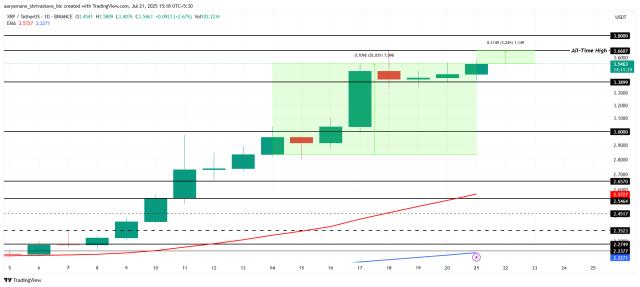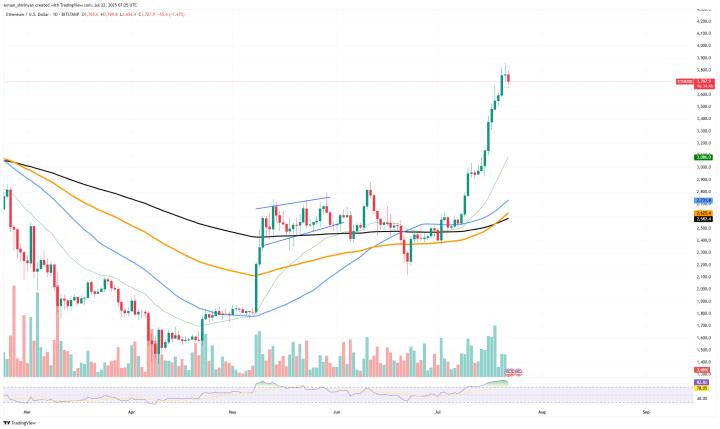The digital asset market is changing rapidly, as traditional finance gradually understands the promise of blockchain and crypto innovators are leading the way. Developments such as tokenized stocks and modern security standards are driving industry-wide discussions at global events.
Adam Levine, Senior Vice President of Business Development and Partnerships at Fireblocks, and CEO of Fireblocks Trust Company, stands at the intersection of these advances. Speaking with BeInCrypto at Sunnycan on the French Riviera, Levine shared candid insights about regulatory progress, tokenization, and the current state of institutional crypto adoption.
Institutional Understanding, Adoption Rate, and Evolving Risk Curve
We are seeing discussions become much smarter, aren't we? Previously, people would look for reasons to reject, whether by pointing out regulations or claiming the technology doesn't work. But now, traditional institutions are seeing evidence from the crypto world about the scale and speed blockchain can achieve.
Now, they are beginning to truly consider what they can do smarter and better with this technology. So, the nature of discussions is becoming much better. Technology teams are really starting to understand the differences and, while the infrastructure across different protocols, the limitations and opportunities with smart contracts.
So, overall, it's encouraging to see that instead of starting from zero, they are thinking about what is possible to achieve business results.
It's no surprise that banks are never the fastest, right? But native crypto teams are always on the cutting edge, they can move much faster.
They are different stakeholders. What we are seeing is that some crypto native companies have developed into more mature enterprises. And fintech and digital banking companies are in the middle, where they still have stakeholders who need you to think about all kinds of different risks, but moving much faster than a traditional bank.
So, once banks really move, you will feel the impact, but certainly crypto native companies and now digital banking fintechs are starting to see the impact much faster.
Liquidity, Interoperability, and the Rise of Layer 2s
What we have seen from many, whether L1 or L2, is a similar approach when they enter the market. They are looking for a niche where they can be different, and they use their capital to provide really significant incentives for the industry to adopt them. There's nothing wrong with that. It's a great thing. But that means certain assets are being tokenized on one chain versus another chain. And now you have different liquidity pools. The same thing you can say with stablecoin, right? There's USDC or USDT on one protocol, but you want to buy an asset on another protocol, that's not feasible, right? So, you have these issues and many stablecoin providers are saying, great, I'll just take incentives to provide native on multiple protocols. That's not really the most efficient. So, it's interesting to see the innovation we're seeing in interoperability.
The companies we work closely with, LayerZero, Ownera, Chainlink, Wormhole, are all providing very critical interoperability solutions that will help solve the issue of assets being tokenized on one blockchain but needing a stablecoin on another blockchain. People no longer have to think, I have USDC on Polygon and USDC on ETH, but I want to buy an asset on base, now what? These solutions are critical, and they are coming from crypto native, but even Biddle and examples like Kinexis and JPM are real POCs and in production depending on these interim partners.
Security Standards and MPC in Crypto
MPC is the gold standard when it comes to the security quality you use with your wallet. Where they control the keys, that's crucial. Unfortunately, many still think multi-sig is MPC or multi-party computation. Clearly not. It might feel obvious, but we can point to some public examples of very large hacks or a multi-sig behind the scenes.
If you don't want to buy cheap fish or security, you have to focus on some version of MPC. Clearly, we think our proven experience and recoverability is where you need to start, but MPC needs to be the standard.
Legal Landscape and Progression for Digital Assets
I believe the industry has come much further than just last year, and perhaps due to the changes in the US market.
Each market regulator needs to consider their own concerns, and some, like VARA, have been ahead for a while. But when I travel globally, I see that large institutions want to know what will happen in the US because that will be the benchmark.
And the first few weeks of the current federal administration have made some significant changes to prove not just to traditional US financial players, but to the world that tokenized assets, blockchain, crypto are okay. And now we are starting to see changes from the regulatory community. The Genius Act will be very important, not just domestically but globally. And that is sending signals to banks and traditional players and payment service providers. They should pay attention to that.
Acceptance of Tokenization Hub and Use Cases
Encoding tools are great. They allow you to use our smart contract library to encode anything you want. But we think about a more open system. So, if you have your own smart contract that you have developed or one of your partners like Tokeny, and you want to bring it into Mint and Burn, you absolutely can. We are seeing some very good use cases from some customers such as private debt tokenization, equity tokenization, and bringing that to new markets. That's wonderful.
We still see some particularly interesting cases where people want to tokenize premium wine or resources. The Tokenization tool works very well.
Things Not Mentioned on Stage: Organizational DeFi and Competitive Reactions
Robinhood's announcement is really very interesting. We hear people talking about Europeans being able to easily access US stocks through a simple and great app. They are very excited to see how the rest of the market, some large banks will react. So, this is not only affecting Robinhood and... The continuous conversation is about how organizational DeFi is being accepted by large asset managers, hedge funds, and when banks will start supporting that. This seems to be an important factor.
Conclusion
Adam Levine of Fireblocks provides a clear insight into the rapid development of digital asset infrastructure, where traditional finance continues to steadily transform towards smarter adoption and fintech companies and crypto native teams drive rapid innovation. Challenges of interoperability and liquidation are being addressed by advanced protocol solutions, while security standards like Multi-Party Computation are setting new benchmarks. Evolving regulations are building the necessary confidence for organizations, and the increase in tokenization use cases signals a maturing industry, ready for mainstream collaboration and success.
The industry's progress remains tied to regulatory clarity, competitive fintech innovation, and a commitment to robust security and seamless interoperability.







